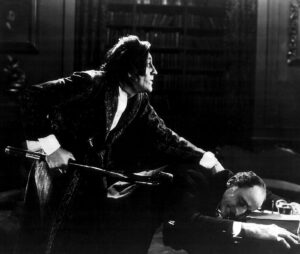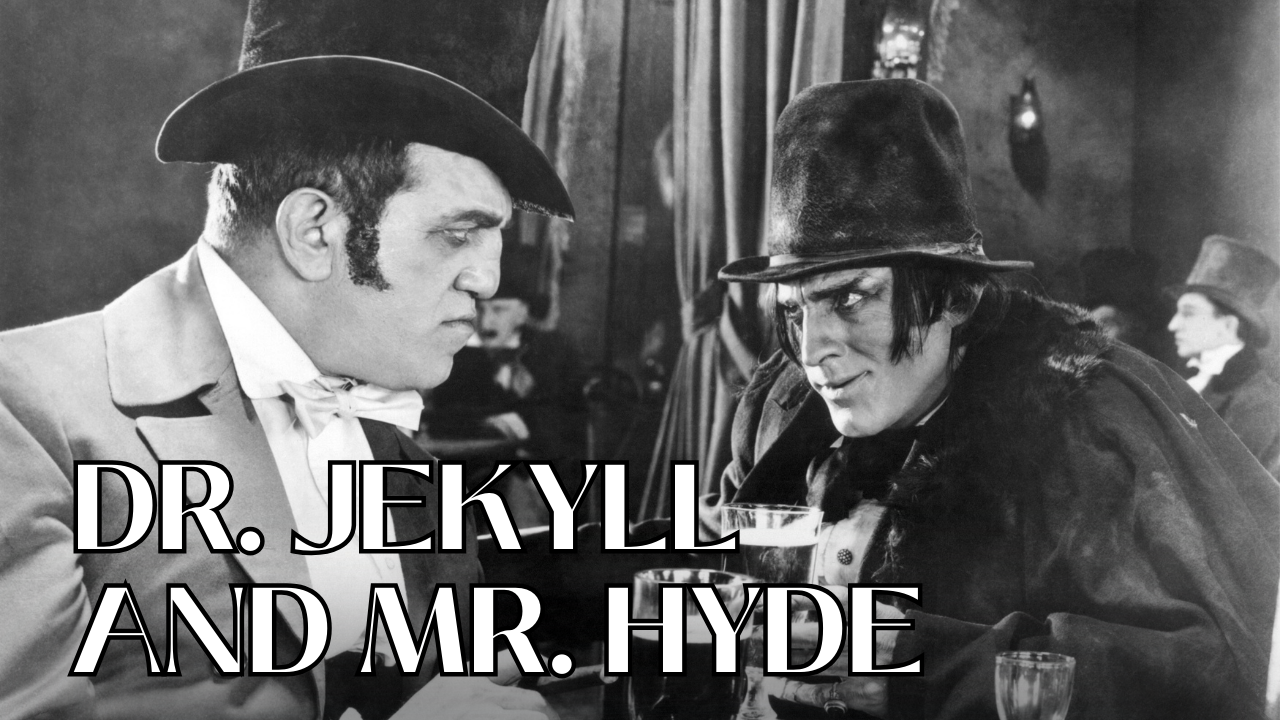A Silent Horror Masterpiece
“Dr. Jekyll and Mr. Hyde” (1920) is a groundbreaking silent horror film that explores the darkest corners of the human psyche.
This adaptation of Robert Louis Stevenson’s famous novella brings to life the terrifying duality of man.
With masterful performances, innovative special effects, and a haunting atmosphere, this film remains a landmark achievement in cinematic history.
The Plot: A Descent into Darkness

Dr. Henry Jekyll is a respected scientist and physician, known for his noble intentions and groundbreaking research. However, he harbors a deep obsession with the duality of human nature. His desire to separate the good and evil aspects of man leads him to develop a potent serum. This mysterious concoction transforms him into his dark alter ego, Mr. Hyde.
Mr. Hyde is the embodiment of pure evil—grotesque, violent, and unrestrained by morality. He indulges in a life of debauchery and cruelty, free from the constraints of societal expectations. But as Jekyll continues to experiment with the serum, he loses control over the transformations. Hyde’s influence grows stronger, threatening to consume Jekyll entirely. The psychological torment of Jekyll’s struggle is the heart of this story, illustrating the catastrophic consequences of unchecked ambition.
Cast and Characters
-
John Barrymore as Dr. Henry Jekyll / Mr. Hyde
-
Martha Mansfield as Millicent Carew
-
Brandon Hurst as Sir George Carew
-
Charles Lane as Dr. Richard Lanyon
-
Cecil Clovelly as Edward Enfield
John Barrymore as Dr. Jekyll and Mr. Hyde
John Barrymore delivers an unforgettable performance, seamlessly transitioning between the kind-hearted Jekyll and the monstrous Hyde. His use of physicality and expressive facial features creates a terrifying transformation without the need for modern CGI. Barrymore’s portrayal of Hyde is both grotesque and captivating, making it one of the most iconic performances in silent film history.
Martha Mansfield as Millicent Carew
Martha Mansfield plays Millicent Carew, Jekyll’s love interest. Her role adds emotional depth to the film, showcasing the personal stakes of Jekyll’s descent into darkness. Her delicate performance contrasts sharply with the monstrous presence of Hyde, emphasizing the tragedy of Jekyll’s downfall.
Cinematic Achievements and Special Effects
“Dr. Jekyll and Mr. Hyde” (1920) stands out for its groundbreaking use of special effects. The transformation sequences, achieved through double exposure and clever editing, were revolutionary at the time. The eerie cinematography, shadowy lighting, and atmospheric set design create a haunting visual experience. The film’s ability to convey psychological horror without dialogue showcases the power of silent cinema.
Themes and Symbolism
This film is more than just a horror movie; it is a deep exploration of human nature. The duality of good and evil is central to the story, questioning whether morality is an inherent trait or a fragile construct. Jekyll’s descent into madness highlights the dangers of unchecked scientific ambition and the consequences of suppressing one’s darker impulses.
Legacy and Influence
“Dr. Jekyll and Mr. Hyde” (1920) paved the way for future horror films, influencing generations of filmmakers. The themes of duality and transformation have been revisited in countless adaptations and inspired characters in literature and cinema. John Barrymore’s performance remains a gold standard in horror acting, and the film continues to be studied in film schools worldwide.
Final Verdict
For fans of classic horror, silent cinema, and psychological thrillers, “Dr. Jekyll and Mr. Hyde” (1920) is a must-watch. Its haunting atmosphere, groundbreaking effects, and powerful performances make it an enduring masterpiece. If you appreciate films that explore the depths of human nature, this is one cinematic experience you won’t forget.
Where to Watch
This silent classic is available on various streaming platforms and public domain film archives. Experience the chilling tale of Dr. Jekyll and Mr. Hyde today!
Like, Share, and Comment!
If you enjoyed this review, don’t forget to like, comment, and share! Stay tuned for more classic film reviews, and subscribe for the latest updates on vintage cinema gems.



